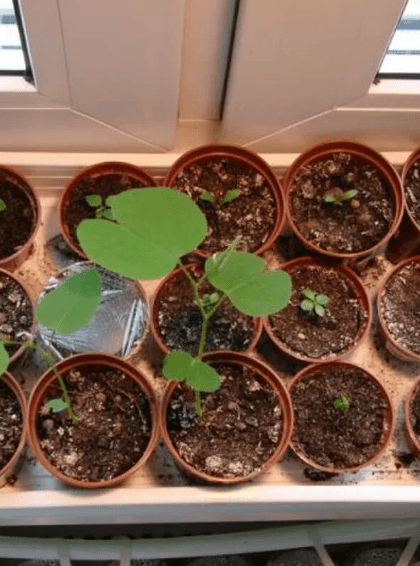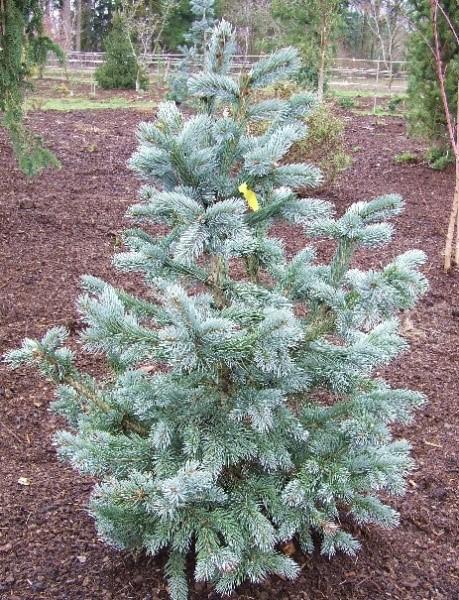Content
Many people who are passionate about growing indoor flowers dream of purchasing a rare plant. Bauhinia or orchid tree can become a real pearl in the home collection of an amateur florist. The plant blooms luxuriously and for a long time and is not too demanding in terms of maintenance conditions.

A special feature of Bauhinia is its large, bright buds, reminiscent of orchid flowers.
What does Bauhinia look like?
Bauhinia (orchid tree) belongs to the legume family. The appearance of the plant is varied: in nature it is tall trees, medium-sized shrubs and vines. The leaf shape of Bauhinia is heart-shaped. The green or silver-gray plates consist of two halves, joined at the base and diverging at the top.
The flowers of the tropical crop are large, bright, with a variety of colors - pink, red, purple, yellow, white. Bauhinia buds are located at the ends of the shoots and form lush clusters. Most types of flowers have a pleasant aroma.
After the petals fly off, pods with inedible seeds form on trees and bushes. The shape and size of the fruit depend on the type of plant.
How does Bauhinia bloom?
Bauhinia blooms for a long time: from April to October. New buds are formed and bloom constantly. Magnificent bauhinia flowers literally shower the orchid tree. However, the buds are short-lived: each of them retains its fresh appearance only for a week.
Where does Bauhinia grow?
In the wild, Bauhinia grows in equatorial and subtropical conditions. The plant can be found in the hot climates of Asia, Africa, Australia, and Central America. The heat-loving culture feels most comfortable in tropical forests and swampy areas. Some species of Bauhinia grow in savannas and mountainous areas. In temperate climates, the orchid tree is grown as a large indoor plant.
Types that are grown at home
There are more than 200 varieties of orchid trees in the world. Bauhinia is widely used in landscape design in countries where the climate allows. At home, the size of the plant is much more modest than that of those growing in nature.Also, indoor culture develops more slowly than outdoors.
Bauhinia acuminata or Malaysian
The bush rarely exceeds 1.5 m in height, the length of the leaves is 10 cm. The snow-white flowers of the Malaysian bauhinia reach a diameter of 8-10 cm.

Each of the buds of the Malaysian bauhinia withers within a day, but the flowering process is extended for almost six months
Bauhinia tomentosa
The tree is 1.5-2 m high and covered with bright green leaves with pronounced dark veins. Lemon-yellow flowers with a burgundy spot inside last only a day, managing to change the color of the petals to purple in a short time.

Thin branches of Bauhinia tomentosa droop under the weight of buds and fruits
Bauhinia corymboses
The plant is a vine with flowers collected in a loose cluster. Pale lilac or light pink veins on the petals of Bauhinia corymboses are a distinctive feature of the variety.

Young leaves of Bauhinia corymbata have a reddish tint, later they acquire a pronounced green color.
Bauhinia purpurea
The most common variety grown at home is Bauhinia purpurea. A tree with a round crown and drooping shoots looks very presentable.

The petals of Bauhinia purpurea are painted in all shades of regal purple-red color.
Bauhinia solitary
The tree, which in nature reaches 6 m in height, grows up to 1.5 m in indoor conditions. The plant has large leaves (up to 15 cm in length), under the weight of which the branches bend to the ground. Pastel yellow flowers with pink specks form a cluster. The color of one of the petals is different - it is densely covered with bright crimson strokes.

Large-scale flowering of Bauhinia solitary occurs in the summer, but individual buds may appear throughout the year.
Bauhinia variegated
Bauhinia variegated is native to Asia, particularly India, where the orchid tree is considered sacred. The plant has large pink or lilac flowers that appear in winter.

Bauhinia variegated flowers have long been part of the national cuisine in India.
Blake's Bauhinia
The hybrid plant is considered a symbol of wisdom in its homeland of Hong Kong. Blake's Bauhinia blooms from November to April. Like all hybrid species, the crop does not bear fruit.

The pink-purple and crimson flowers of Blake's Bauhinia exude a pleasantly sweet aroma.
How to grow an orchid tree from seeds
Those for whom growing indoor plants has become a serious hobby should know that bauhinia negatively perceives changing conditions. Therefore, it is not advisable to purchase an adult copy.
Growing Bauhinia purpurea from seeds is a process accessible to anyone involved in growing home crops. With the right approach, you can get a presentable tree in a pot.
- At the beginning of spring, the seeds are soaked in warm water and subjected to scarification (surface damage). The operation promotes the rapid appearance of sprouts.
- The prepared seeds are planted in a container with a light soil mixture. It is first necessary to form a thick drainage layer to prevent moisture stagnation.
- Cover the container with seeds with glass or cellophane film.
- Seedlings are placed in a warm place. Optimal temperature +25 0WITH.
- Provide good diffused lighting.

For irrigation use a pale pink solution of potassium permanganate
It should be noted that daily temperature fluctuations negatively affect the condition of orchid tree seedlings. If all operations are performed correctly, sprouts appear on days 5-7. Young bushes should be protected from direct sunlight.

In comfortable conditions, an orchid tree can grow 1 m in just a few months
Care instructions
Despite the fact that the orchid tree is considered an exotic plant, caring for it is simple. It is important to choose a favorable place to place indoor culture. Bauhinia loves bright light, then it blooms profusely. On a tree growing in the shade, only rare buds form. If the windows in the room face south, they should be shaded in the summer. In the warm season, it is advisable to take the orchid tree in a pot out into the fresh air - onto a balcony, loggia, or veranda.
Watering
The orchid tree generally does not require high humidity. The exception is the heating season, when radiators and heaters make the air dry, and the sweltering summer heat. In order not to disturb the flowering of bauhinia at home, you should not spray the tree. It is recommended to wipe the leaves from dust with a damp sponge once every 5-7 days.
Plants are watered with approximately the same frequency during the warm season. But experienced flower growers advise carrying out the procedure, focusing on the local climate. Watering should be plentiful, while ensuring that the soil has time to dry out. In autumn, the number of procedures is reduced.In winter, a tree located in a cool place is watered once every 2-3 weeks, constantly monitoring the condition of the soil. The earth ball in the pot should not dry out completely.
Settled water at room temperature is suitable for irrigation. To increase the acidity of the soil, add a few lemongrass granules to the liquid. Another option is to dilute 2-3 drops of apple cider vinegar in water.

Bauhinia folds its leaves at night and in cloudy weather, an alarming signal is staying in this state for several days
Fertilizer application
Fertilizing of the crop begins 2-3 weeks after the sprouts appear or the tree is transplanted. During the period of growing green mass, complex fertilizers are chosen. During flowering, fertilize with potassium and phosphorus.
Fertilizers are diluted with water and the nutrient-enriched moisture is used during irrigation.
Rest period
In winter, pots with bauhinia are placed in the sunniest room. In the cold season, it is advisable to use additional lighting, since a tropical plant needs a 10-12 hour day. At the same time, the room should be cool. The best option is to place the plant on a glassed-in loggia or veranda. If this is not possible, then the orchid tree is placed near the window, after covering the radiators with thick blankets.
Trimming
The plant requires mandatory pruning. The procedure has the best effect on the development of bauhinia.The first time pruning with pruning shears is carried out in the spring, when the plant reaches 3 years of age:
- To enhance the growth of side shoots, the tree is shortened to the desired height.
- The emerging young shoots are pinched into 2-3 leaves.
Agricultural technicians warn that during pruning you should not remove more than ¼ of the crown. An orchid tree can also be formed using the bonsai technique. For this purpose, young but already lignified shoots are wrapped with wire. The structure is left for 2-3 months.
Transfer
Bauhinia is replanted at a young age every spring. The capacity is increased annually by 3-4 cm. Adult specimens do not need replanting. But in a pot with a plant, the top layer of soil is changed every three years to a depth of 10 cm. The replanting process is organized as follows:
- A drainage layer of expanded clay or small pebbles is formed at the bottom of the container.
- Coarse sand or perlite is added to the prepared universal soil.
- Pour the soil mixture into the pot.
Plants are transplanted using the transshipment method. In the process, they try to keep the earthen lump intact. The transplanted orchid tree is watered with settled water.
Pests and diseases
A newly acquired adult plant should be kept in quarantine for 30 days. Bauhinia can get sick if agricultural practices are violated. To prevent negative changes, a number of preventive procedures should be performed:
- The plant is inspected regularly.
- The room is ventilated daily.
- Wipe dust from sheet plates at least once a week.
- When transplanting, the container is sterilized and the soil is disinfected.
If the orchid tree could not be saved, then it is necessary to determine what kind of disease has affected the plant.A correct diagnosis is the key to successful treatment. Most often, indoor specimens suffer from the following diseases:
- chlorosis;
An illness caused by iron deficiency can be overcome by feeding the orchid tree with fertilizer containing the element
- root rot.
The disease can be cured at an early stage by removing the softened fragments; if the rhizome is extensively damaged, bauhinia cannot be saved
If parasitic insects appear on an orchid tree, emergency measures should be taken before the population grows. At the initial stage, folk remedies help; when a colony of arthropods spreads, insecticides are used:
- scale insect;
The scale insect tubercles on a diseased bush are smeared with kerosene, turpentine or vinegar solution, washing off the substance after two hours
- whitefly;
Whiteflies can be killed by hanging fly tape near the affected orchid tree.
- aphid;
To combat aphids, the eaten leaves and shoots are cut off, the plant is sprayed with a solution of laundry soap, and then washed off in the shower.
- spider mite
Spider mites are removed by wiping the leaves with alcohol wipes, and the tree, washed in the shower, is tied with cellophane for two days.
Reproduction methods
In addition to planting by seeds, bauhinia can be propagated by cuttings. Woody shoots of an adult specimen are cut off. The branches are divided into cuttings. The blanks are germinated in containers with a biostimulator, covered with a plastic bag on top. When using this method, you should not expect quick results - orchid tree cuttings take a long time to take root.
Conclusion
The bauhinia or orchid tree grows well in consistently warm climates. But if you wish, you can have a beautiful exotic plant at home.A newcomer from the tropics feels comfortable at a consistently high temperature, good lighting, and controlled watering. During the cold period, the plant should be given dormant conditions.
Reviews of the orchid tree














